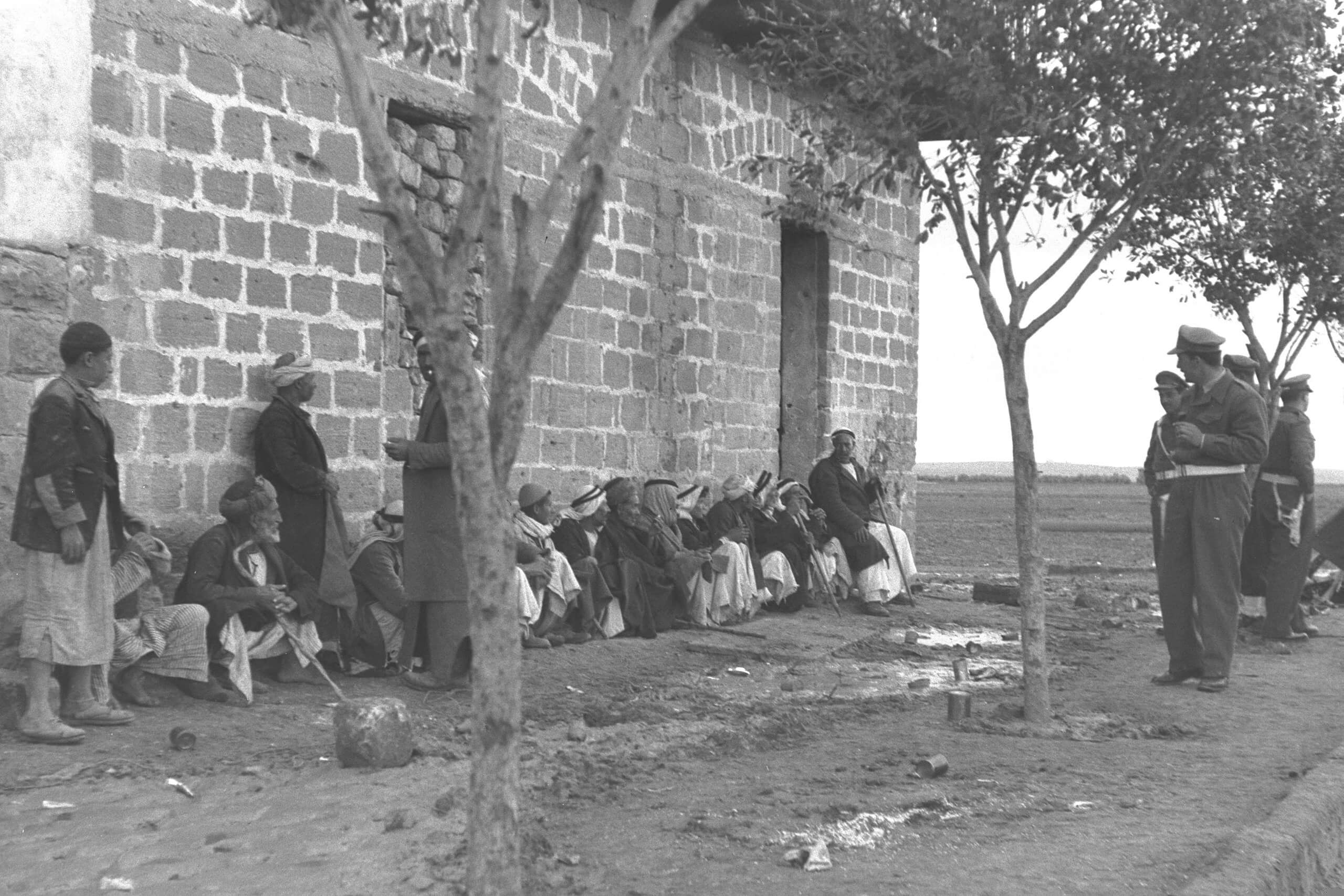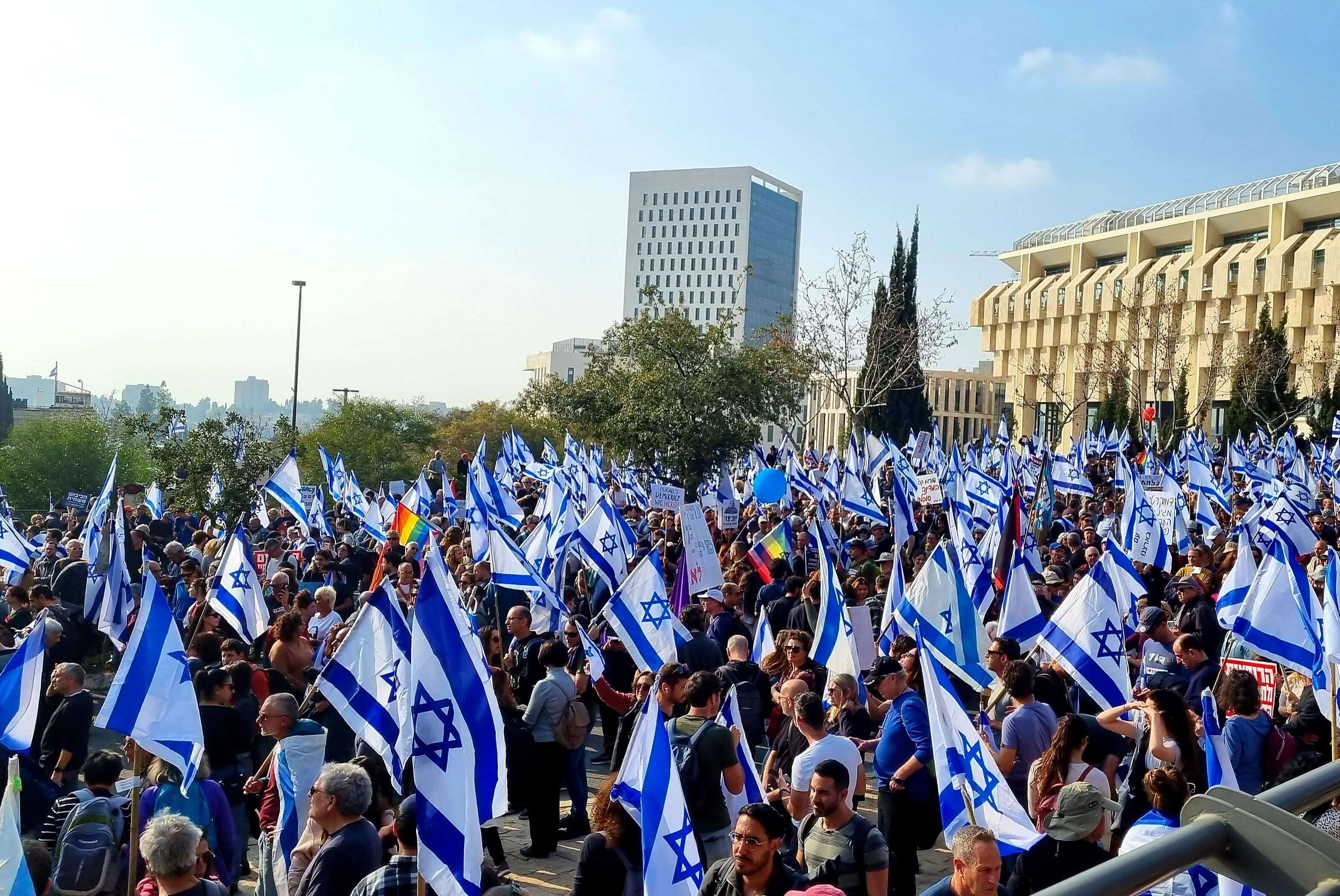Palestine 1948 and Its Lessons for Displacement Today
How community social cohesion shapes population displacement, one of today’s greatest global challenges.

Published by The Lawfare Institute
in Cooperation With

One of the many devastating consequences of war is population displacement, with the number of refugees and internally displaced usually dwarfing those killed. But those who flee do so in different ways. Daniel Arnon of the University of Arizona, Richard McAlexander at the University of Pennsylvania, and Michael Rubin of the University of Connecticut discuss the phenomenon of preemptive displacement: when communities as a whole leave before war arrives at their villages. Drawing on the 1948 Palestinian refugee crisis, they argue that strong social ties facilitate this collective decision and that the relief community's policies should recognize the implications of preemptive displacement.
Daniel Byman
***
A year ago, the United Nations High Commissioner for Refugees (UNHCR) announced a tragic milestone—the number of forcibly displaced people in the world had reached 100 million, the most ever on record. Since then, that number has only increased.
Unsurprisingly, armed conflict and political violence episodes are responsible for the lion’s share of forced displacement. Far from an unintended consequence or “collateral damage” from the fighting, warring parties often target civilians in order to cause mass displacement as a means of identifying and removing populations that threaten their authority or security. Internationalized civil wars in Syria, Yemen, Ethiopia, Iraq, South Sudan, Democratic Republic of the Congo, Myanmar, and too many others have ballooned the population of refugees, asylum seekers, and internally displaced in recent years, and generated intense and intractable humanitarian crises. In the year following Russia’s February 2022 invasion of Ukraine, the war generated over eight million refugees and almost six million internally displaced persons.
Civilians displaced by violence are victims, but they are not always passive ones. Researchers and policymakers have long been resistant to emphasizing civilians’ agency to make decisions and take action in ways that shape armed conflict processes and outcomes, perhaps because of a sense that it appears to imply some degree of responsibility thrust upon the victimized. Nevertheless, civilians do exercise some autonomy, even if severely restricted within contexts of intense organized violence, with consequences for the conduct of armed conflict, the number of civilian casualties, and the scale of forced migration.
In a recent article published in International Security, we sought to explain civilians’ efforts to evade conflict violence through (forced) migration. Whereas many civilians in conflict zones flee their homes in response to belligerents’ deployment of lethal violence in their communities, others, seeing the writing on the wall, leave their homes preemptively in order to evade exposure to targeted mass violence. In our article, we focus in particular on preemptive evacuation: a specific form of forced displacement in which nearly the entire community leaves prior to belligerent forces’ arrival to seize territory or deploy violence in the area. We argue that community social cohesion—the degree to which members exhibit attitudes and behaviors that promote commitment and attachment to the community—facilitates civilians’ broad-based collective action on the scale required to organize and achieve preemptive evacuation before conflict violence arrives at their doorstep.
We examine these dynamics in the context of Palestinian communities’ displacement during the Arab-Israeli conflict in 1948. While many components of this conflict are often considered unique, its core dynamics are similar to other wars that include strategic displacement violence and widespread forced migration. In the decade leading up to the war, the Zionist movement accelerated its institutional state-building efforts including military training and accumulating matériel. Conversely, the Palestinian national movement was still trying to recover from institutional collapse following an uprising in 1936–1939, which was brutally quashed by the British who controlled Palestine. In November 1947, the UN voted in favor of partition, and inter-communal violence escalated between the Jewish and Arab-Palestinian communities. As the British Mandate authorities withdrew from Palestine, the soon-to-be Israeli forces shifted towards offensive operations, which included strategic displacement violence, as the surrounding Arab armies initiated their ultimately unsuccessful attempt to overtake the newly founded Israeli state. Over 700,000 Palestinians were displaced in the process. The Palestinian state of displacement continues today, with the majority of Palestinians remaining stateless.
Despite the power imbalance between the Jewish and Arab-Palestinian communities and the role of Israeli operations to depopulate Arab-Palestinian villages in founding the Jewish state, we observe substantial variation in both whether and how villages were depopulated. Often, even neighboring villages experienced very different displacement processes and outcomes. For example, Al-Tina and Jilya sat four miles apart, on the highway from Jerusalem to Majdal. Both villages had similar numbers of residents, levels of development and economic growth, and resident participation in the revolt a decade prior. Yet when the fighting approached the area in July 1948, only in Jilya did villagers decide to preemptively facilitate broad-based community evacuation. By migrating collectively, Jilya’s villagers preserved the community during their period of displacement, first seeking refuge in nearby Hebron, with many later relocating together within a single town across the border in Jordan. In Al-Tina, by contrast, the villagers did not mobilize collective migration, and many remained. As Israeli historian Benny Morris recounts in “Birth of the Palestinian Refugee Problem, 1947–1949,” Haganah forces violently occupied the village, resulting in civilian casualties and destruction of homes and infrastructure, after which Al-Tina’s residents fled to disparate areas.
What explains these two neighboring communities’ very different responses and outcomes? We argue that the degree of social cohesion among their populations accounts for why Jilya’s residents were able to evacuate the village and resettle with the community substantially intact, while Al-Tina’s residents suffered exposure to conflict violence and community social connections were lost in displacement. Al-Tina was composed of multiple clans (hamulas) exhibiting contentious relations, including feuds and a history of internecine fighting during the revolt, and divided in their political allegiances to competing factions in the Palestinian national movement, which produced social divisions that prevented a collective response to rapid expansion of the Israeli offensive. Jilya, on the other hand, had only one major clan, with relatively harmonious intra-village relations and unified political allegiances, allowing community members to leverage social cohesion to mobilize preemptive collective migration.
Drawing upon detailed historical accounts of displacement of Arab Palestinian villages and archival records (those with interest in the specifics of our sources should consult our longer piece) to measure village social cohesion and other key characteristics, we find that during the 1948 war, Palestinian villages with greater social cohesion were more likely to successfully preemptively evacuate as the Israeli offensive spread throughout the territory.
Our framework, emphasizing civilians’ active role in shaping where civilians preemptively migrate, and the scale at which they do so, in armed conflict is especially helpful to understanding conflicts involving strategic displacement violence. Recent examples include state-perpetrated campaigns of strategic displacement violence against the Rohingya population in Myanmar and the Tigrayan population in Ethiopia. In contexts in which belligerents are primarily interested in defeating their enemy’s forces on the battlefield, but aim to govern the local population, community social cohesion can promote civilian collective action to engage with belligerent forces, through bargaining or resistance, to remain in their homes. For example, Oliver Kaplan, Associate Professor at the University of Denver’s Josef Korbel School of International Studies, shows how more cohesive communities are able to engage with belligerents to retain autonomy and negotiate limits to conflict violence during wartime in Colombia. By contrast, in conflicts in which one or more belligerents abandon interest in governing the civilian population, and resort to strategic displacement violence to dispel them from the territory, civilians’ prospects for physical security within their communities of origin are limited. In these contexts civilians are more likely to leverage social ties to mobilize collective migration.
Distinguishing preemptive from reactive forced displacement, and explaining the ways in which social structure impacts communities’ collective migration patterns, carry important implications for how the international community of governments, non-government organizations, and donors engaged in security and humanitarian relief efforts should respond to escalating conflict. Because forced migration is so often a tragic response to organized violence and atrocities already underway, the international community often looks to conflict management strategies and mobilizes humanitarian relief in response to episodes of widespread violence. Yet, we show how preemptive migration can be a warning sign of potential atrocities to come, which should trigger conflict- and violence-prevention strategies as a first response. The prospects for preemptive forced migration should also motivate a preemptive humanitarian response to mobilize resources and establish sites of refuge in order to aid and secure displaced populations even before widespread violence begins.
Human rights defenders and practitioners on the ground can leverage knowledge of local communities’ social dynamics to flag the origin points and scale of preemptive migration to inform resource allocation, and to facilitate safer passage through conflict zones to areas of refuge. Understanding the variation in how forced migrants arrive in refugee camps and host communities also has implications for the international community on the design of refugee and internal displacement (re)settlement sites and policy. As the World Bank highlights in a recent report, “a low level of socioeconomic capital can be further eroded [during displacement].” Social cohesion among communities in areas vulnerable to conflict violence imply the need for institutions and programs designed to preserve and leverage the advantages of the social capital these displaced populations bring with them to areas of refuge. Contexts in which the displaced come from communities lacking social cohesion, arriving at areas of refuge without social ties intact, may require different responses that incorporate efforts to generate social trust and cohesion within vulnerable and socially dislocated populations seeking refuge.




